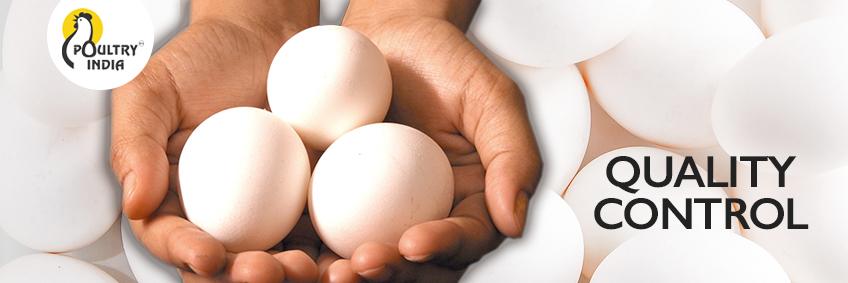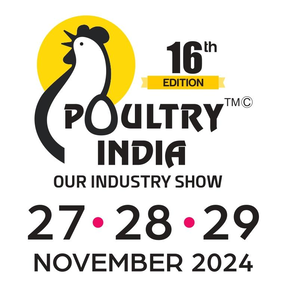Quality control in egg production

The first step in the quality control process is the segregation of eggs with obvious defects. The major technique used in subsequent quality tests on the rest of the eggs is candling. In this process, all eggs are passed over a bright light which shows up internal defects and previously undetected cracked or weak shells. The internal defects often detectable by candling include blood and meat spots, enlarged air cells and very thin whites.
Samples of eggs are also taken to assess egg freshness and yolk colour. These eggs are broken out onto a level surface and the height of the thick albumen is measured with a micrometer. From this measurement and the weight, the Haugh unit value of an egg can be calculated. The fresher the egg, the higher its Haugh unit value.
Yolk colour is checked against a required colour standard, the DSM Yolk Colour Fan (formerly known as the Roche Yolk Colour Fan) being the one used by the egg industry worldwide.
Although definitions may differ between areas, in general, on candling first quality hen eggs must be fresh and free from blood spots and other inclusions, and must not have been subjected to incubation. The shell must be clean, sound and not misshapen.
The main difference between second quality and first-quality eggs is that the shells of second-quality eggs may be cracked and misshapen, but the shell membrane must be intact. They may also be less fresh, which is indicated by an enlarged air cell and watery white, but must be free from rot. Second-quality eggs, appropriately identified, may be sold (but not re-sold) in the shell for human consumption, or may be used for the production of egg pulp (bulk egg content mainly used in the food industry).
Eggs which do not conform to the requirements for first-quality or second quality eggs are not fit for human consumption. Examples of such eggs are those with large blood spots or other inclusions, rotten eggs and those with ruptured shell membranes.









.jpg)



